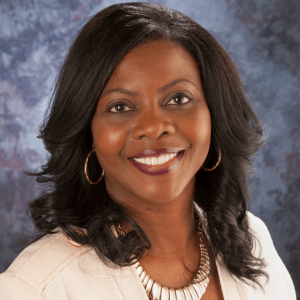If you come to hear Dr. Chavonda Jacobs-Young deliver our York lecture next week, you’ll be inspired by someone I consider a visionary, a champion for agricultural science, a trailblazer and an anti-hunger crusader.
I also consider her a friend, and I hope you’ll join me at The Harn Museum of Art at the University of Florida on Wednesday, May 3 at 10:30 a.m. for her talk, titled, “Revolutionary Research for a Growing World.” If you can’t make it in person, I recommend watching it live here.

As USDA’s Under Secretary for Research, Education and Economics and Chief Scientist, Dr. Jacobs-Young is an inspirational leader with a fresh perspective. She led the establishment of USDA’s Office of the Chief Scientist, and today she leads all science efforts at USDA.
Jacobs-Young helped establish USDA science priorities in supporting precision nutrition research, building scientific infrastructure and the next generation of ag scientists and leaders, and advancing equity through research and partnerships. She is a passionate advocate for and pursuer of innovative science.
USDA research touches on many aspects of our nation’s food system, so whatever she covers, it will be a fascinating hour that gives us a glimpse of the future. She is among the leading architects of a roadmap for the future of agricultural science. She’s at the center of the development of AGARDA, a research initiative aimed at potentially transformative projects in technology, pest control and veterinary countermeasures to biological threats.
It’s a high-risk, high-reward approach that’s new to USDA.
Dr. Jacobs-Young has a record of firsts, including being reportedly the nation’s first African-American Ph.D. in paper science and engineering as well as the first woman and person of color to lead USDA’s Agricultural Research Service.
She’ll be the first person to deliver the York lecture since before COVID. Please help me make this a success by participating in the visit of this thought leader to our campus. What we learn could help us feed a growing world and revolutionize how we think about the science behind it all.
 0
0
